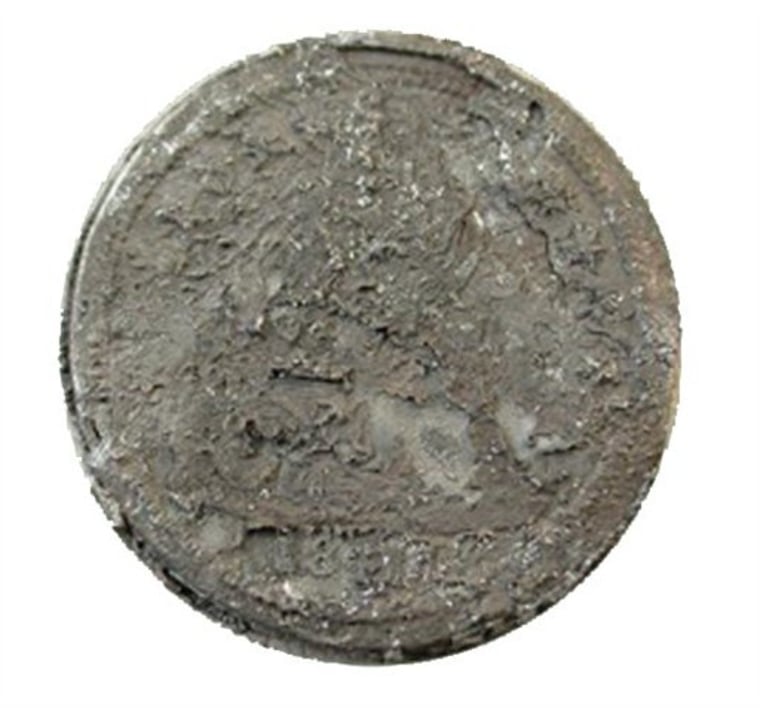The story of the Confederate submarine H.L. Hunley, the first sub to sink an enemy warship, is leading back to the Old World as researchers plan to spend weeks trying to discover the roots of four European crewmen. Scientists also said Thursday they have recovered a second coin from the hand-cranked sub — a silver dime to go along with a $20 gold piece recovered in 2001.
With a mint date of 1841, the dime shows Lady Liberty seated in robes, surrounded by 13 stars. It was found with the remains of a European crewman known only as Lumpkin.
Genealogist Linda Abrams, who has been researching the crew's identities for six years, plans to spend several weeks searching records in England, Germany and Denmark.
"I was lured in by the opinion of everyone involved at the time that these eight men were Americans," said Abrams, of Longmeadow, Mass. "It was pretty shocking to find out that four of them appear not to be Americans. That was the first shock. The second shock was learning that the records in the South are no comparison to the records in the North."
The Hunley and its eight-man crew sank the Union blockade ship Housatonic off Charleston on Feb. 17, 1864. The Hunley also sank in the battle. It was raised in 2000 and is now held in a conservation lab. The crewmen's remains were buried in 2004.
Evidence based on the crewmen's teeth shows at least four came from Europe.
The first stop for Abrams will be the British Archives. During the 19th Century, the British recorded all crewmen of foreign ships that came to the United Kingdom. That may provide clues about when the Hunley crewmen emigrated, Abrams said.
"I have to look at this trip as the first trip. I'm not going to come back with these guys in my briefcase," she said. "That would be a miracle."
Crewman J.F. Carlsen, is thought to be of Danish descent whose family lived in the Schleswig-Holstein area of what is now Germany. Carlsen earlier served as helmsman on the Jefferson Davis, a Confederate privateer that sailed from Charleston with a black hull, masts and sails.
Arnold Becker was born in Germany and is thought to be the youngest crewman. He had served on the ironclad Arkansas, which in 1862 ran a gauntlet of 39 Union vessels on the Mississippi before reaching the Confederate stronghold of Vicksburg.
Less is known about the two other European crewmen, Lumpkin and a man thought to be named Miller.
The gold coin previously found in the sub is said to have saved the life of Lt. George Dixon, the sub's commander, at the Battle of Shiloh.
The bullet hit the coin in Dixon's pocket, and he had it engraved to read: "Shiloh April 6, 1862 My life Preserver."
Scientists say they may find other coins in the sediment hardened on the sub's bottom. But coins were rare in the South toward the end of the war and many had been melted to help with the war effort.
"The Hunley was in essence a time capsule, and continues to teach us in very real terms about everyday life in the war torn South," Hunley Commission Chairman Glenn McConnell said.
